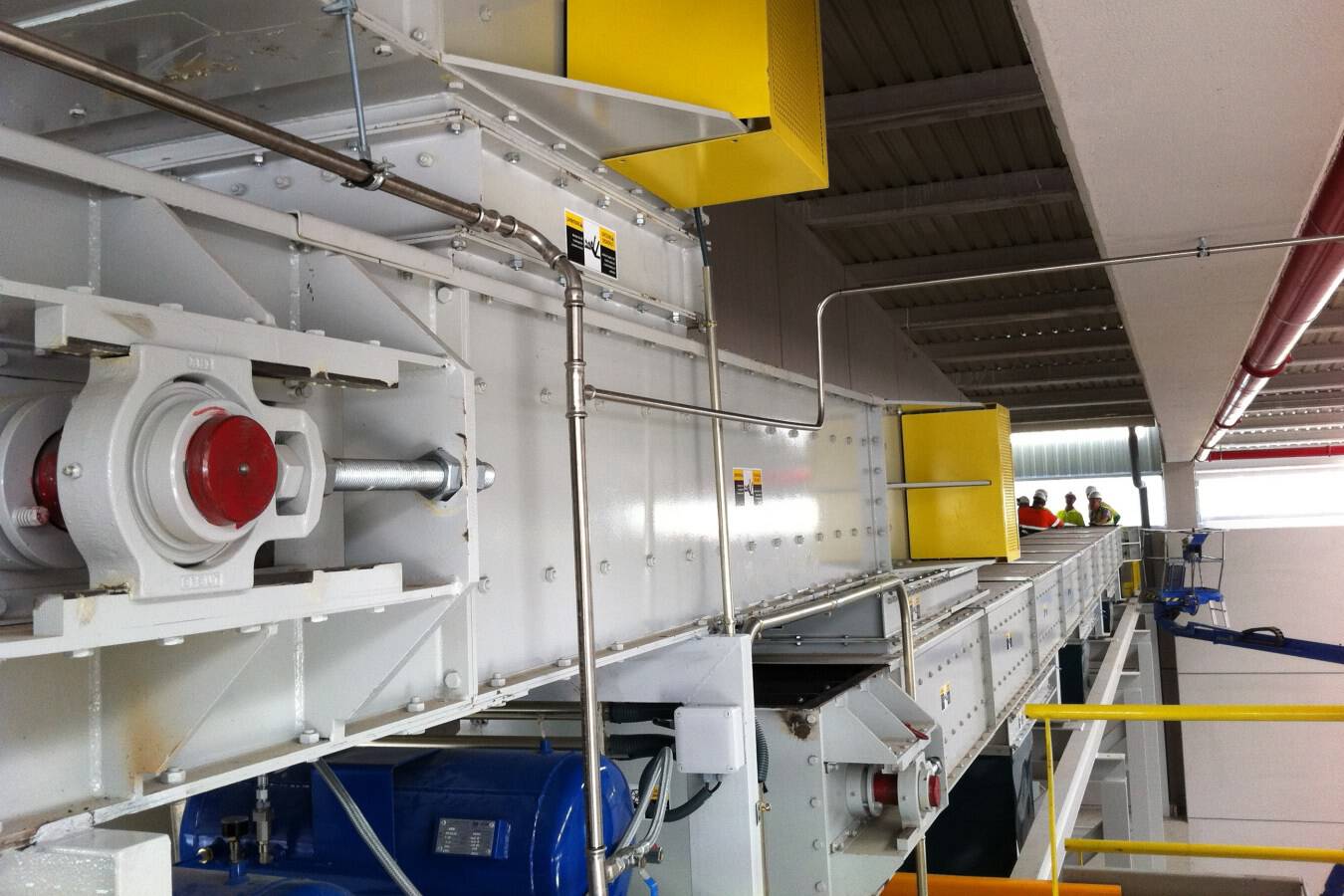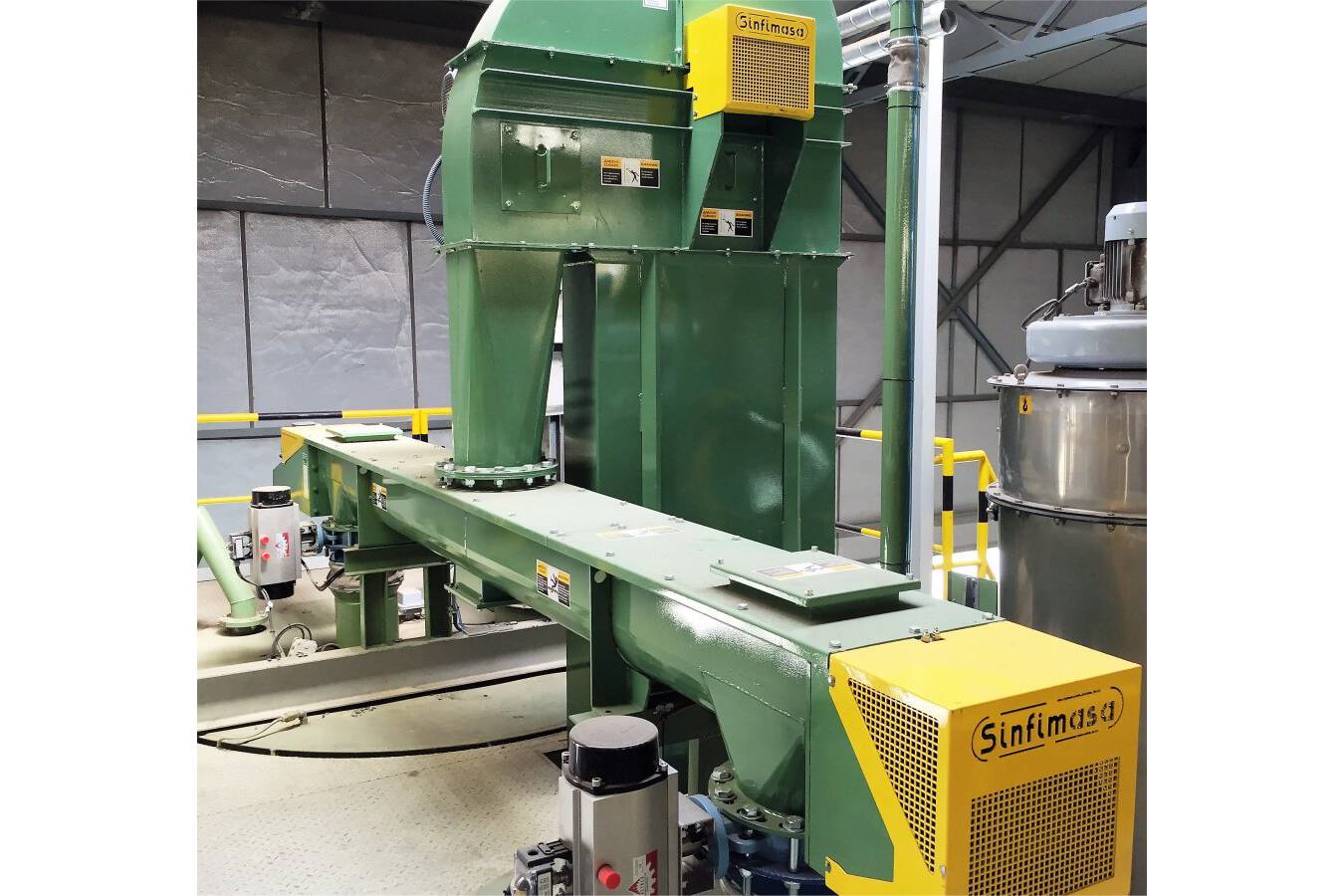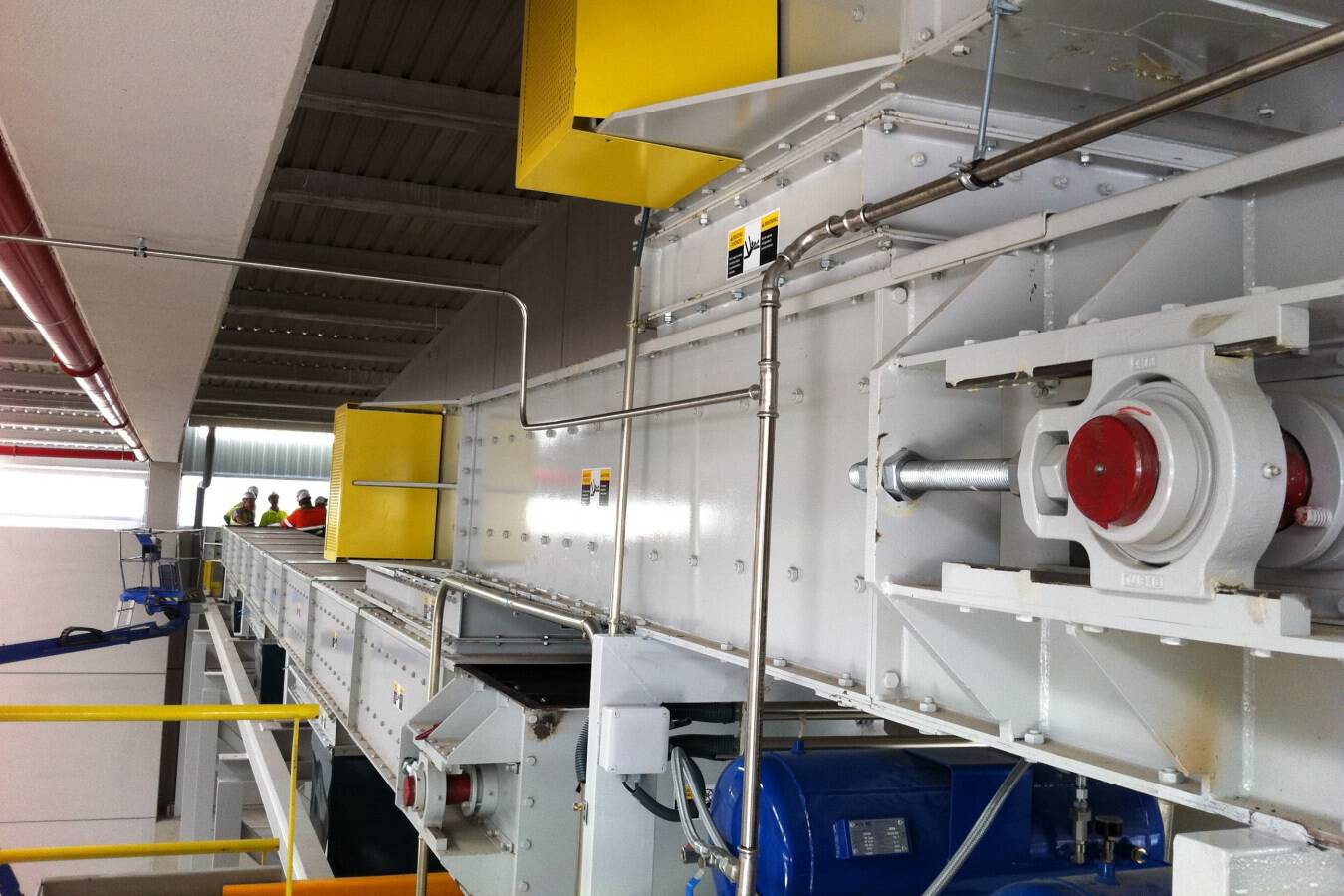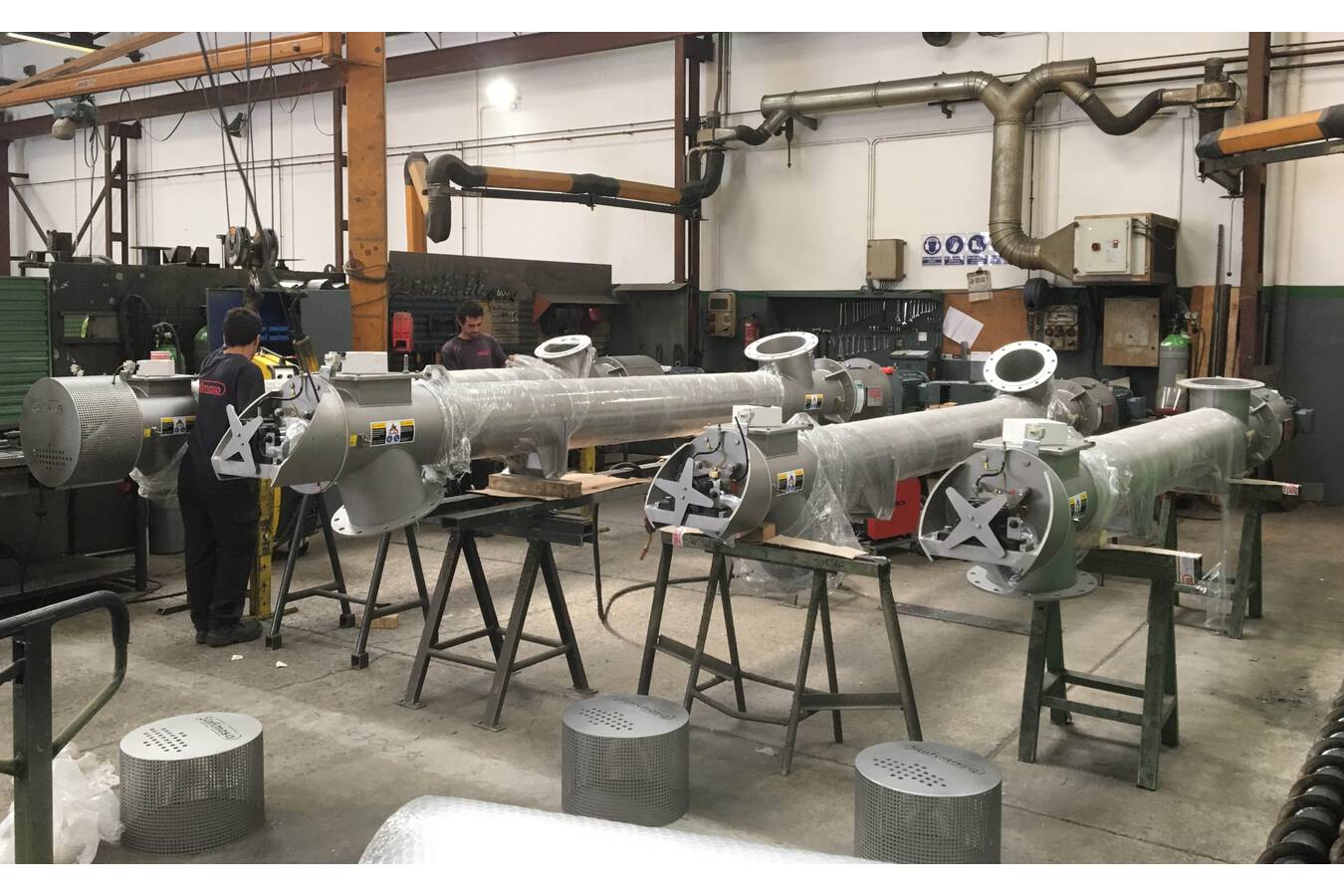Preventing wear of conveyors for abrasive bulk goods
To prevent abrasive wear, it is necessary to use abrasion-resistant industrial coatings with good resistance to the (hardest and sharpest) particles in the bulk material being transported.
The simplest solution is to apply a hard coating or lining to the surface of the parts of the conveyor in contact with the product. This protective coating should have a greater hardness than the particles causing the wear.
A second possibility is to apply reinforced coatings with a better chemical composition, giving phases greater functionality and more protection. A third possibility is to treat the base metal, making it more resistant.
Wear protection for bucket elevators
For a bucket elevator, the buckets should be reinforced at the edges with an anti-wear steel plate, as this is the area most affected by wear.
Wear protection for screw conveyors
In screw conveyors, on the other hand, the entire spiral and shaft should be made of anti-wear steel. For this purpose an alloyed, hardened and tempered anti-wear steel is used , which is characterised by its resistance to abrasion and impact, as well as its high mechanical strength, good formability and weldability.
Wear protection for chain conveyors
In the case of chain conveyors, the three main points of wear are: 1) the carriers, 2) the central chain or chains that drag the blades, and 3) the structure or body of the conveyor itself, mainly the areas where the chain drags, as well as the bottom where the material is dragged and the sliding parts of the material at the inlet(s) and outlet(s).



